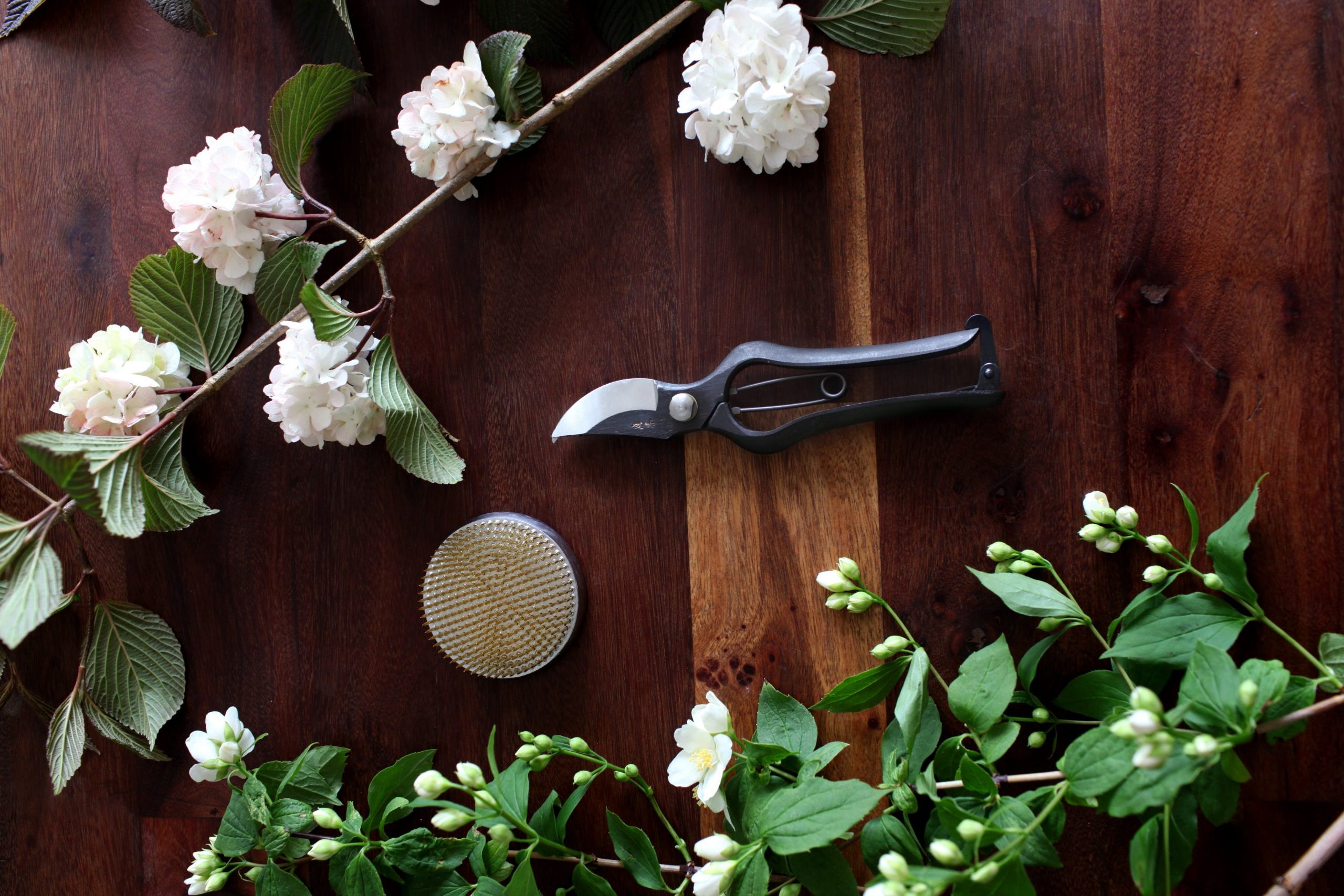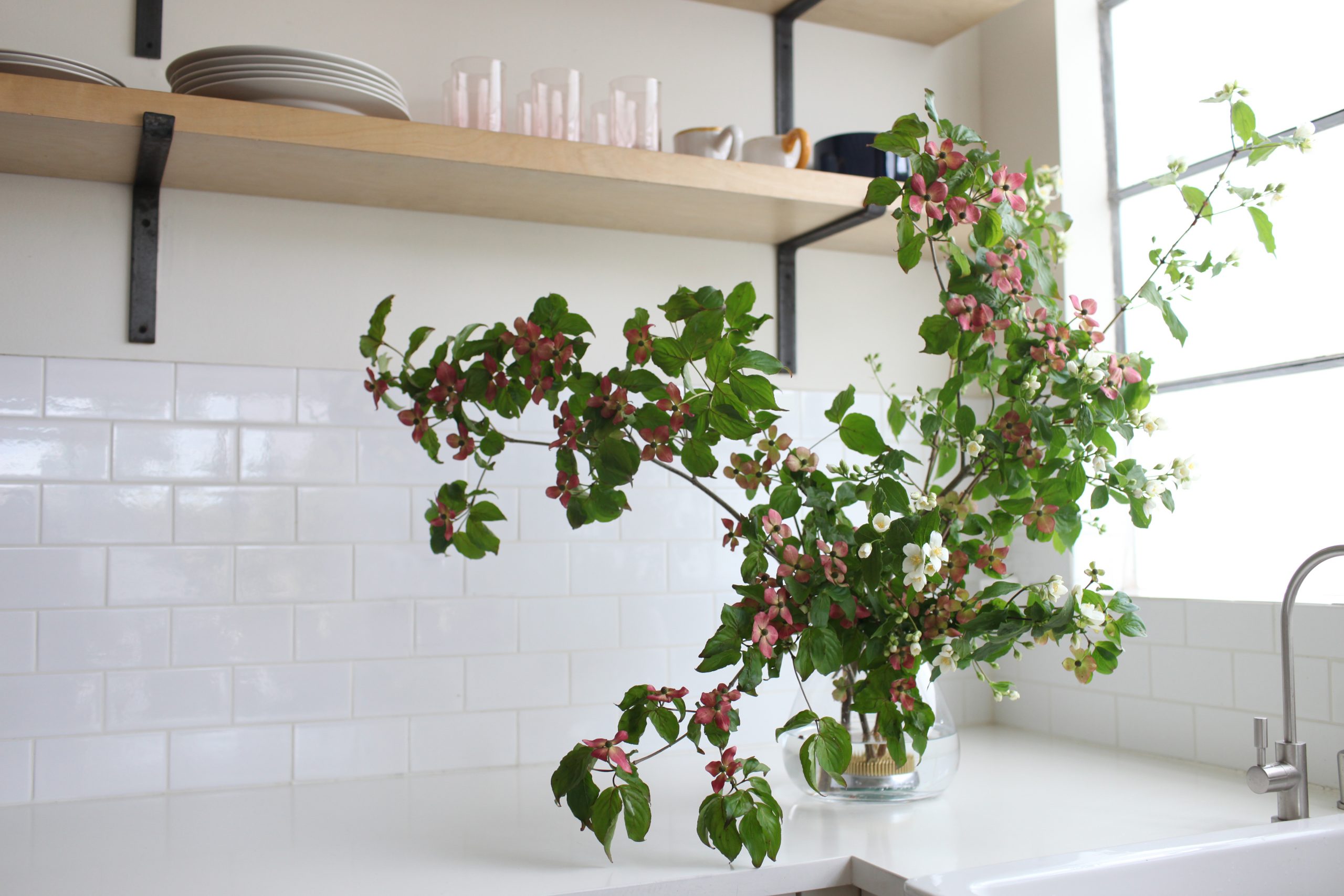Ikebana is the centuries-old Japanese art of arranging flowers. The practice, which roughly translates to “making flowers come alive,” uses carefully selected blossoms, greenery and other flora to convey a specific feeling or emotion to an observer – just as a painting or sculpture might.
“If a petal happens to fall into the water, then so be it. It's all part of the Japanese notion of wabi-sabi, the Buddhist belief that there's beauty in imperfection.”
This Japanese flower arranging has a minimalist aesthetic, and choosing each piece is as important as the final composition itself. The process is deliberate and reflective. In fact, many of the principles of the KonMari Method™ apply to ikebana flower arrangement – specifically, honing in on what sparks joy.
Holly Carlisle – a floral artist based in Birmingham, Alabama, and founder of ROSEGOLDEN Design Studio – creates beautiful, ikebana-inspired arrangements, and she offered advice on how to make your own ikebana flower arrangements at home.
“Acknowledging and appreciating seasonal changes is fundamental to ikebana,” explains Holly. “Arrangements should be regarded as a reflection of a specific moment in time – a snapshot or portrait paying reverence to the season.”

Collect
To make your own ikebana flower arrangement, Holly suggests starting with a walk around your neighborhood to collect items that speak to you. Ask yourself, “What response is this sparking? Curiosity? Interest? Joy? The feeling of wanting to touch it?” Let those emotions guide your choices. Besides flowers, you might also reach for a pretty leaf, a few blades of grass, a branch or a twig. In Japanese flower arrangements, nothing is off limits.
Curate
Once you have a collection of items, it’s time to start putting things together. Most Japanese flower arrangements include only about 5 to 13 stems – the culling process can be challenging. “I find that to be the hardest part,” Holly confesses. “When people see many beautiful things, it can be overwhelming to decide what they want to express.”
To get past that feeling, Holly recommends picking up one stem that speaks loudly to you — one you know you want to include in your ikebana flower arrangement — and “shopping it around” with the others. “Put that item next to other things to see what relationships you find. Do you see some kind of unity? Similar colors? Or another type of harmony? If you’re not seeing anything complementary, go in another direction.”
The KonMari Method™ — and Marie’s philosophy of kurashi — can help at this step. “When you tidy your clothing, you’re letting go of items that don’t serve you – and expressing gratitude. Apply that mentality to flowers, too,” Holly says. “Say you look at a branch that’s very compelling, but you have to cut it to make it work in your piece. Acknowledge it, thank it for its beauty and service, and then chop chop.” Remember that the items you select for your arrangement don’t have to be perfect. Crooked stems and uneven shapes are all welcome!
Compose
Next, it’s time to compose your pieces in a vessel. Unlike traditional western arrangements, which try to hide the “mechanics” of the design, Japanese ikebana floral arrangements highlights it. The vessel is often shallow, and it relies on what’s called a kenzan (or flower frog), with pins pierced through the base of the stems to hold everything in desired position. The water in the kenzan is simply another element in the piece — and if a petal happens to fall into the water, then so be it. It’s all part of the Japanese notion of wabi-sabi, the Buddhist belief that there’s beauty in imperfection.
While different types of vessels carry different meanings – a bronze dish, for example, represents the earth – Holly recommends not getting bogged down by the need to understand every tenet of the craft of Japanese floral arranging. “People should feel free to approach ikebana-inspired floral arrangements in their own way,” she says. “Use a bud vase or a ceramic bowl if that’s what you have.” The same principle applies to the design process. Ikebana’s roots date back to seventh-century Japan – when flowers were given as an offering to the Buddha – and there are now thousands of Japanese ikebana “schools” that train and certify their own ikebana masters. That’s why Holly reinforces that her work is ikebana-inspired; she is not a master – she has her own take on the craft. “I think of ikebana as something to experience and explore. It’s about finding beauty in all of nature and expressing that admiration.”
As you experiment with ikebana at home, remember that the process is just as important as the end-result. “It’s all about slowing down, taking things one at a time,” says Holly. “It’s great practice for life in general!”








